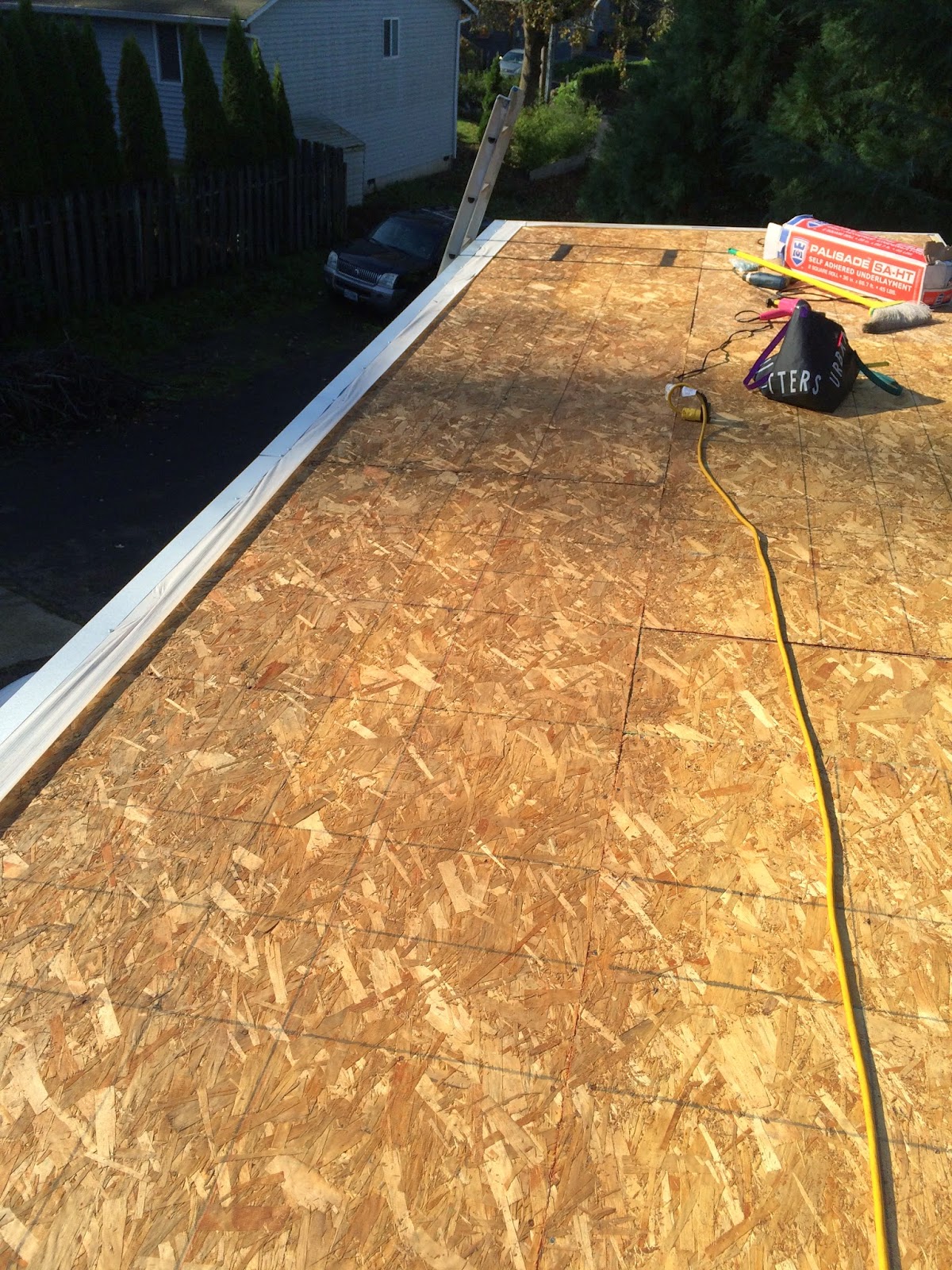But before I go on, I'd like to say another quick THANK YOU to the folks at Taylor Metal.
THANK YOU ASHLEY AND LEWIS!!!
While there are many different roofing types for "normal" houses, tiny houses on trailers like mine have far fewer ones; basically, metal and metal. I could have chosen a raised seam metal roof but, frankly, I wanted the installation to be as easy as possible and from a cost perspective, roofing for my 196 square feet is VERY affordable.
Dry, and protected, and ready for installation.
First, you lay out the butyl tape on the outer edge.
It's like putty, so you have to be careful not to rip it or stretch it too thinly.
(and don't let the extra roll drop off the roof, like I did)
Next, you put the "wiggle foam" on top of the butyl tape.
Pay close attention to how the top and bottom edges line up
and make sure the "wiggles" are in the same position for both.
Starting at the DOWN WIND part of the house (in my case it was the back of the house) set the corrugated metal panel, in place.
Drill equally spaced holes ON THE RIDGES, 4 wide and 4 long.
(this was my son's suggestion and it took me several panels to realize that drilling first instead of using the "self tapping" screws to drill the holes, was much faster)
Do not put holes or screws in the valley's of the metal, it will leak.
Using screws with self sealing rubber gaskets (they're probably called "roofing screws") screw the panel to the roof, being very careful not to screw too tightly and dent the panel.
Add a bead of silicone caulk to the edge of the panel.
It will look like this:
Set the next panel on top of the first one, drill, screw, and repeat.
While I was on the roof I was constantly bothered by the weight of the extension cord, wanting to pull the drill right off the roof. It really was a pain in the butt and I was sitting on it and put the nail bags on it, etc...
This pictures shows why its a good idea to have friends who know what they're doing.
As you see here, my boyfriend shows up, wraps the cord around the top rung and......
there you go.....
no more cord pulling problems.
Did I mention that my boyfriend came over just as I was finishing up the roofing? Ha!
Anyways, it was a good thing he did because I ended up being a half sheet short of what I needed, material wise. THIS time, however, I had not planned correctly and didn't have an extra piece. I did have, however, some extra pieces of corrugated that I planned to use as siding. But, they were all cut to size prior to delivery. Because I was short a half sheet, I ended up needing to cut one of my siding pieces to finish the roof. (I can always order another piece, for the siding)
Luckily I had a metal cutting blade for my circular saw, and a boyfriend who knows how to cut long straight lines in difficult corrugated metal.
Just now, while writing this blog, I realized I do not have a picture of the completed roof taken from the top. I guess you'll have to see that view when I post my article about the flashing installation. (gotta' wait for another sunny day for that project as well)
I do, however, have this AWESOME pic of the roof line, taken from below.
Ain't it PURDY?
:o)




























